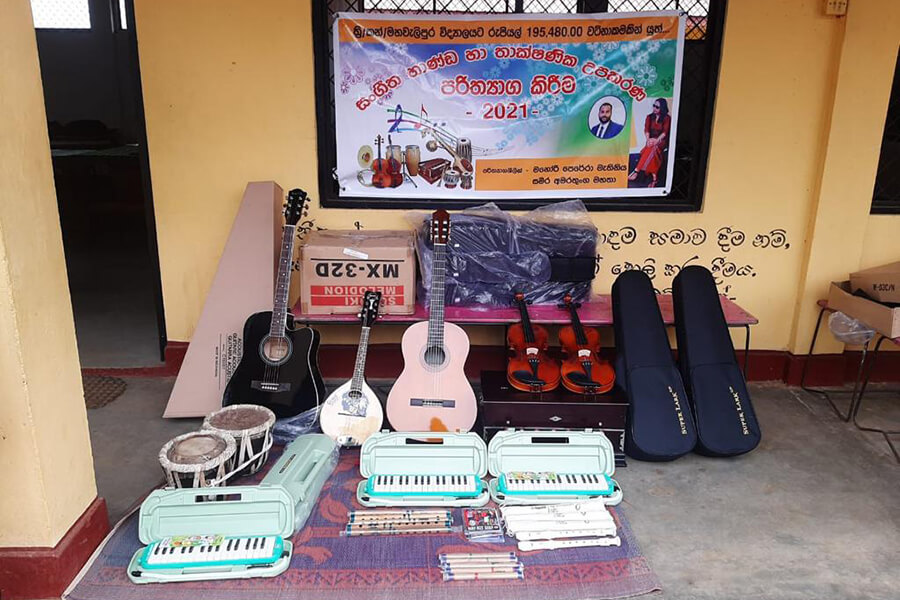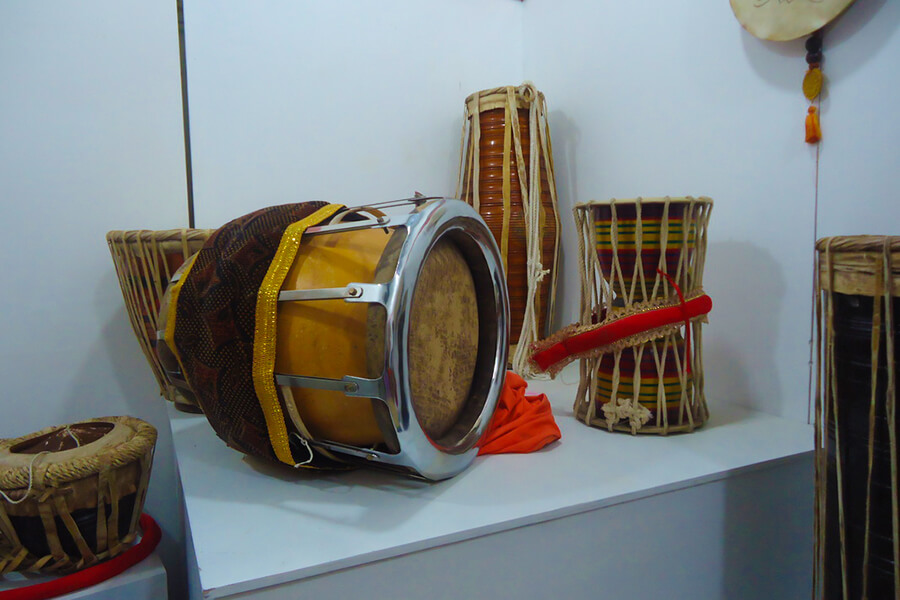Sri Lanka boasts a diverse array of traditional musical instruments. The top 5 Sri Lanka traditional & modern musical instruments below will provide you with the most valuable insights into their evolution, influence on local music, and the best places for enthusiasts to have their own fascinating instruments.
An overview of Sri Lanka music culture
Sri Lanka’s music culture is a vibrant tapestry woven with diverse influences spanning centuries. Rooted in ancient folk rituals, the music of Sri Lanka reflects the country’s rich cultural heritage. Hindu and Buddhist religious traditions have also shaped the musical landscape, infusing it with devotional chants and melodies. The legacy of European colonization left its mark, introducing instruments like the guitar and ukulele, along with traditional cantiga ballads. The African influence brought by the Portuguese, known as baila, adds a lively and rhythmic element to Sri Lankan music.
At the heart of Sri Lankan music culture are traditional instruments such as the Rabana drum, Thammattama, and flute, which are used in various musical genres and rituals. Festivals and pageantry are also integral to the music culture, showcasing vibrant performances incorporating dance and theatrical elements. Sri Lankan music has also been influenced by the commercial and historical impact of Indian cinema, with the sounds of Kollywood and Bollywood inspiring contemporary Sri Lankan music. With its rich blend of influences, Sri Lankan music culture celebrates the country’s diversity and creativity, providing a unique sonic experience for locals and visitors alike.
Top 5 well-known Sri Lanka traditional musical instruments
With an amazing and long history of musical genres, Sri Lanka is also famous for its wide range of musical instruments. These instruments are not only valued for their unique sounds but also for their cultural and historical significance. Here are 5 of the traditional musical instruments of Sri Lanka:
Gata Bera
Gata Bera is one of the most prominent and recognized traditional drums in Sri Lankan music. This double-headed drum is an integral part of the country’s cultural and religious practices. Crafted from a hollowed-out log, the Gata Bera produces a deep and resonant sound. It is played with bare hands and is known for its powerful and rhythmic beats. The Gata Bera is commonly used in various ceremonial events, traditional dances, and religious rituals, bringing a vibrant and dynamic element to performances. As an essential component of Sri Lankan music, the Gata Bera represents the rich cultural heritage and rhythmic traditions of the island.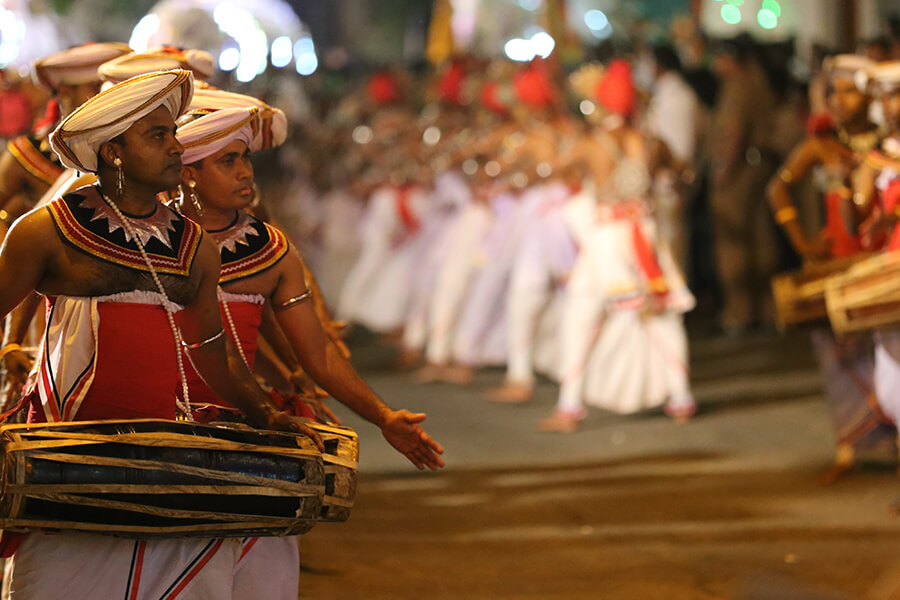
Yak Bera
The Yak Bera is a traditional drum of Sri Lanka that holds a significant place in the country’s musical culture. It is a large barrel-shaped drum made of wood and covered with animal skin. The drumheads are typically made from goat or buffalo hide, tightly stretched, and secured with ropes. The Yak Bera is played with curved sticks, producing deep and resonant tones that can be heard from a distance. It is often used in traditional Sri Lankan rituals, ceremonies, and cultural performances. The Yak Bera not only sets the rhythmic foundation but also adds a powerful and enchanting element to the overall musical experience, making it an essential instrument in Sri Lankan traditional music.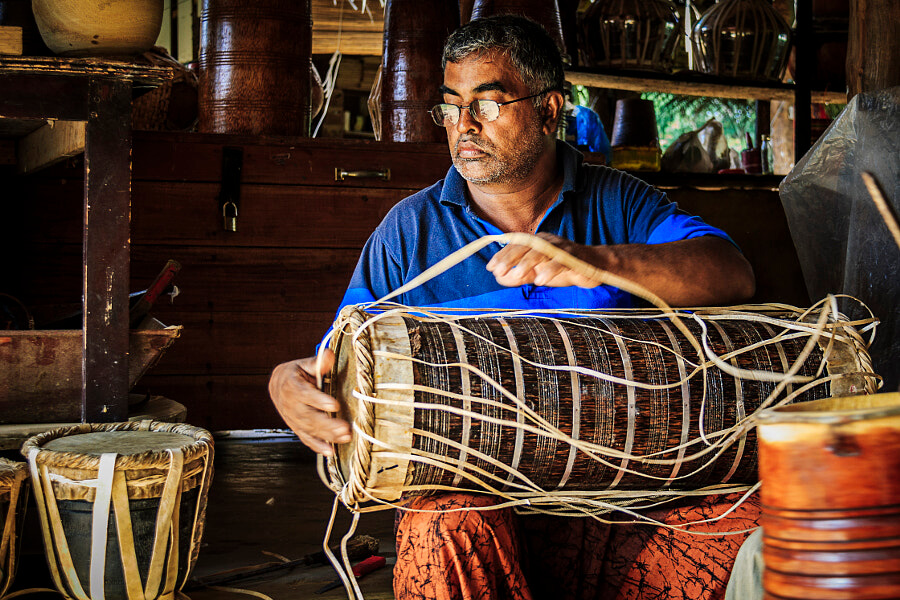
Thammattama
Thammattama, also known as the “double-headed drum,” is a traditional percussion instrument from Sri Lanka. It is an essential component of Sri Lankan classical and folk music. The Thammattama consists of a cylindrical body made from wood, with two drum heads stretched over each end. The drum heads are typically made from animal skin, which is tightly fastened to produce a resonant sound. Thammattama is played with the hands and is capable of producing a wide range of tones and rhythms. It is often used in religious ceremonies, cultural festivals, and traditional dance performances, adding a rhythmic and energetic element to the music. The distinct sound of the Thammattama is both captivating and powerful, making it an integral part of Sri Lanka’s musical heritage.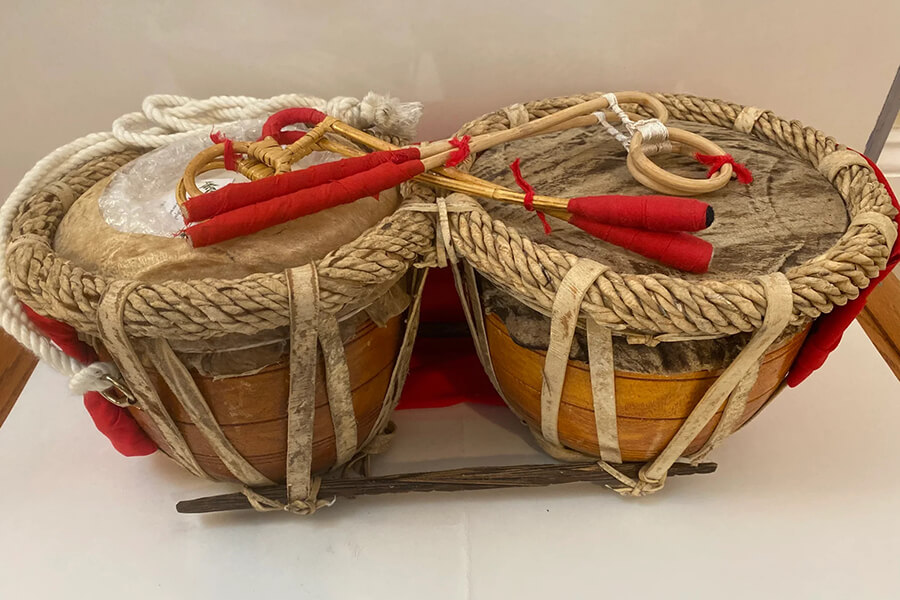
Thalampata
Thalampata, also known as the Sri Lankan cymbals, is a traditional percussion instrument that holds a significant place in Sri Lankan music and cultural rituals. These hand-held cymbals consist of two metal discs that produce a distinct, resonating sound when struck together. Thalampata is commonly used in traditional Sri Lankan dance forms, religious ceremonies, and folk music performances. The rhythmic patterns created by the Thalampata add a vibrant and energetic element to the music, enhancing the overall sonic experience. With its metallic tones and captivating resonance, the Thalampata contributes to the rich tapestry of sound in Sri Lankan music, exuding a sense of tradition and cultural identity.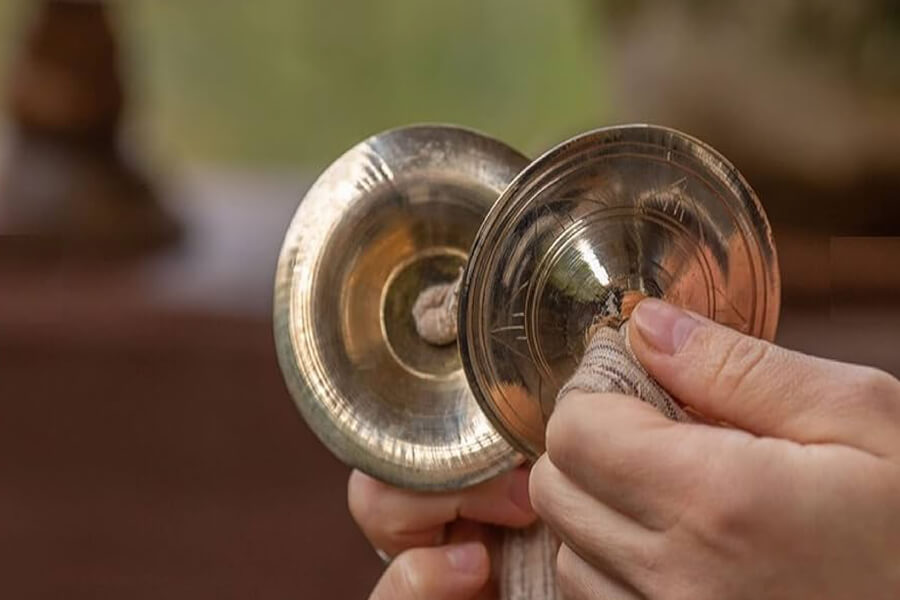
Raban
Raban, also known as Rabana, is a traditional Sri Lankan drum that plays a significant role in the country’s cultural heritage. This one-sided drum is played using the hands and is particularly prominent during Aurudu Kreeda, the Sri Lankan New Year. The body of the Raban is traditionally carved from the wood of the Jak or Vitex tree, and the drumhead is made from the skin of a goat. With its distinct sound and rhythmic patterns, the Raban is a vital instrument in traditional Sri Lankan music and plays a central role in various cultural and festive celebrations. Its mesmerizing beats add an energetic and joyful element to the vibrant musical traditions of Sri Lanka.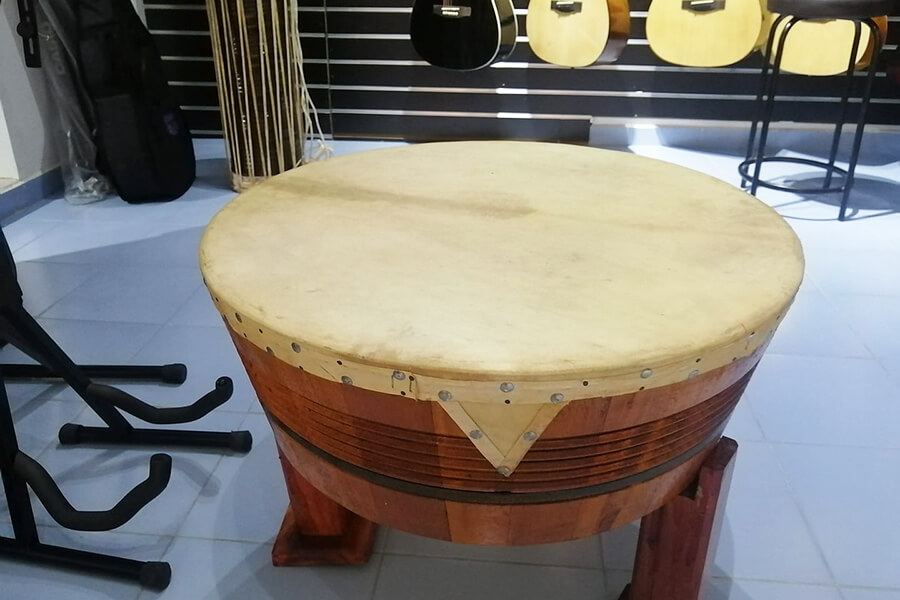
5 most well-known Sri Lanka modern musical instruments
Electric Guitar
The electric guitar has gained popularity in Sri Lanka as a versatile and dynamic instrument in various genres, including rock, pop, and traditional Sri Lankan music. Its unique sound and ability to create a wide range of tones have captivated musicians and audiences alike. In recent years, there has been an increase in the availability of electric guitars in music stores across Sri Lanka, catering to the growing demand. Many aspiring guitarists in Sri Lanka are drawn to the electric guitar’s expressive qualities and the opportunity to explore different playing styles and techniques. Whether it’s performing on stage or recording in a studio, the electric guitar has become an integral part of Sri Lanka’s vibrant music scene.
Keyboards (Synthesizers)
In Sri Lanka, keyboards, particularly synthesizers, have become increasingly popular among musicians and music enthusiasts. Synthesizers offer a wide range of sounds and effects, making them versatile instruments for various genres, including electronic, pop, and contemporary Sri Lankan music. Many music stores across Sri Lanka now carry a selection of keyboards and synthesizers, catering to the growing demand. From entry-level models for beginners to professional-grade synthesizers for experienced musicians, there are options available for every skill level and budget. Keyboard players in Sri Lanka are drawn to the creative possibilities offered by synthesizers, allowing them to explore unique sounds and textures, elevate their performances, and add a modern touch to their music.
Drum set
Drum sets have become increasingly popular in Sri Lanka, captivating musicians of various genres and styles. Whether it’s rock, jazz, fusion, or traditional Sri Lankan music, the drum set adds rhythm, energy, and dynamic depth to any musical performance. In Sri Lanka, there is a growing interest in learning and playing the drums, leading to an expansion in the availability of drum sets in music stores and online platforms. Drumming enthusiasts and aspiring drummers can find a wide range of drum sets to suit their needs, from beginner-level kits to professional-grade sets. With its ability to create intricate rhythms and powerful beats, the drum set has become an essential component of Sri Lanka’s thriving music scene.
Bass Guitar
While Sri Lanka is renowned for its traditional instruments like drums, flutes, and hand cymbals, the emergence of the bass guitar has added a contemporary resonance to the island nation’s musical tapestry. This four-stringed instrument, with its deep, resonant tones, has been seamlessly integrated into Sri Lanka’s diverse music scene. It has become an essential component in contemporary Sri Lankan music, adding a new layer of depth and expression to traditional rhythms and melodies. Musicians and enthusiasts alike have embraced this instrument, recognizing its ability to bridge the gap between tradition and modernity, while preserving the essence of Sri Lanka’s musical identity. As the bass guitar continues to carve its unique niche in Sri Lanka’s musical landscape, it serves as a testament to the enduring power of music to evolve and adapt, transcending boundaries and enriching cultural legacies.
Saxophone
The saxophone, with its mellifluous and soulful tones, has charmed its way into the heart of Sri Lanka’s diverse musical landscape. Rooted in the country’s cultural tapestry, this elegant woodwind instrument has added a contemporary and melodious dimension to the island’s rich musical traditions. Whether it’s weaving its silky notes through traditional Sri Lankan melodies or lending its distinctive voice to contemporary compositions, the saxophone has become a beloved and indispensable part of the local music scene. Musicians across generations have embraced its versatility and emotional resonance, making it a symbol of musical fusion and innovation in Sri Lanka. As the saxophone continues to serenade audiences with its enchanting melodies, it not only showcases the country’s musical evolution but also serves as a testament to the universal language of music that knows no bounds.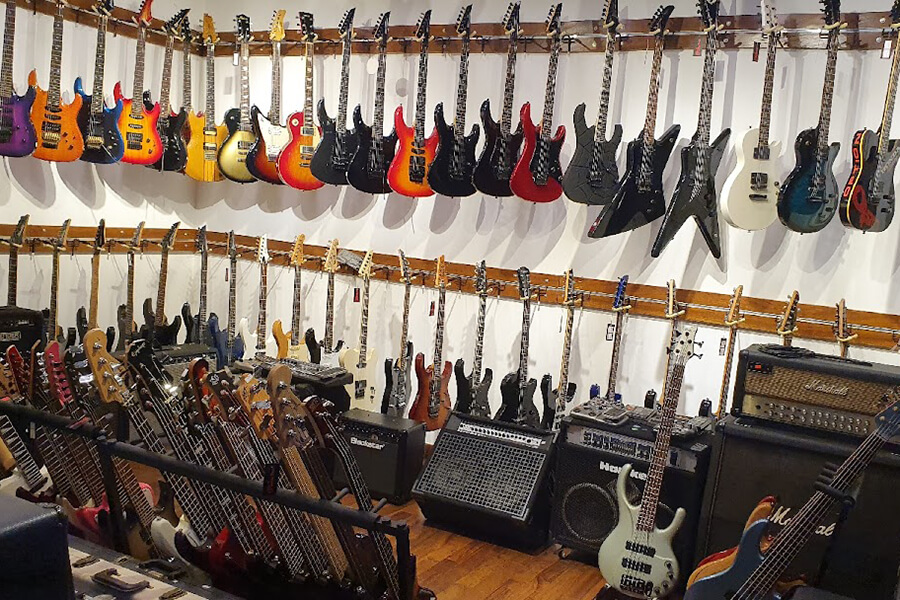
How to buy Sri Lanka musical instruments?
If you are interested in Sri Lanka’s wonderful musical instruments, there are many useful ways to buy them in this lovely country. It depends on your desire, your budget, and your destinations. We will inform you of some destinations to buy Sri Lanka musical instruments and some notable tips when purchasing them as well.
Platform to buy Sri Lanka musical instruments
In Sri Lanka, there are various places where you can buy musical instruments both online and offline.
When it comes to online platforms, some popular options include e-commerce websites such as ikman.lk and music.lk. These online marketplaces offer a wide range of musical instruments for sale, including traditional Sri Lankan instruments like the sitar, tabla, rabana, and geta bera. You can browse through their extensive collections, read product descriptions, and compare prices before making a purchase. They often provide secure payment options and have reliable shipping services to deliver the instruments right to your doorstep. Additionally, these platforms may also have customer reviews and ratings to help you assess the quality and credibility of the sellers.
For those who prefer an offline shopping experience, several stores in Sri Lanka specialize in musical instruments. Sai Sangeetha and Yamaha Music Centre are popular choices in Colombo. They offer a vast selection of instruments, including both local and international brands. Karu Music Center and Rasaangee Musical Center are also well-known establishments where you can find a variety of instruments. These physical stores provide a hands-on experience, allowing you to try out the instruments before making a purchase. The staff in these stores is knowledgeable and can assist you in finding the right instrument based on your needs and preferences.
Important things you should know when buying Sri Lanka musical instruments
● Take the first step to research and understand the instrument: You need to spend time learning about the specific instrument you are interested in purchasing. Understanding its history, traditional usage, playing techniques, and cultural significance will help you make an informed decision and appreciate the instrument fully.
● Authenticity and quality: In order to ensure that the instrument you are buying is authentic and of good quality, let’s look for reputable sellers or stores that specialize in Sri Lankan instruments or have a strong reputation for selling genuine products. Besides, you should check for certifications or guarantees of authenticity if available.
● Material and craftsmanship: Before making purchase decisions, let’s pay attention to the materials used in the construction of the instrument. Traditional Sri Lankan instruments are often made from local woods such as kohomba, kos, or kithul. Inquire about the craftsmanship and the techniques employed in making the instrument to ensure its durability and longevity.
● Maintenance and care: To receive more detailed information, you can inquire with the seller about the maintenance requirements of the instrument. Some instruments may require regular tuning, oiling, or other forms of upkeep. Understanding how to properly care for and preserve the instrument is the best way to ensure its longevity and optimal performance.